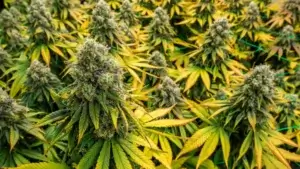Definition
A cannabis cultivation technique that involves cutting off the top growth of a plant to encourage the development of multiple main colas and a bushier structure.
Purpose and Usage
Topping is a high-impact method used by growers to increase yields, improve light distribution, and control the overall shape of the cannabis plant. It is particularly relevant in small or indoor growing spaces where maximizing productivity is essential.
How It Relates to Cannabis
- Involves removing the top part of the main stem, typically above a node, during the vegetative stage.
- Encourages the plant to redistribute its energy to the remaining branches, leading to the growth of multiple main colas.
- Promotes a bushier, more compact plant structure, improving light penetration and airflow.
- Helps maximize yield per plant, especially in controlled environments like grow tents.
- Best performed on healthy plants to avoid unnecessary stress or stunted growth.
Common Misconceptions
- Topping harms the plant: When done correctly, topping improves the plant’s overall health and yield.
- Topping can be done at any time: It must be done during the vegetative stage; topping during flowering can harm the plant.
- Topping is only for advanced growers: While experience helps, beginners can successfully top plants with proper guidance.
Alternatives
- Fimming: A similar technique involving partial removal of the plant’s top growth, producing more branching with less stress.
- Low-stress training (LST): A method of bending branches to achieve a similar bushy structure without cutting.
- Supercropping: A high-stress technique that bends and damages branches slightly to encourage robust growth.
Importance of Topping
Topping is a fundamental technique for improving cannabis plant structure and maximizing yields. It provides growers with control over the plant’s growth and ensures efficient use of available space and light. Understanding topping is key to successful cannabis cultivation, especially for those seeking to optimize productivity.





